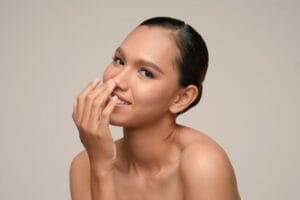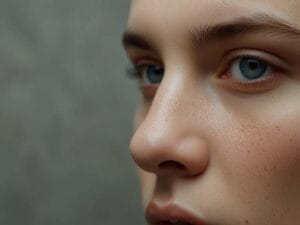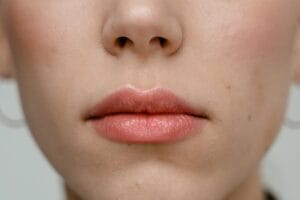Expectations from Rhinoplasty: What You Should Realistically Expect
Lisa had been considering rhinoplasty for years. Her nose bothered her in photos, and she’d saved up enough to finally take the plunge. But three months post-surgery, she was panicking. “Is this normal?” she asked her surgeon during a follow-up. Her nose still looked swollen, not quite what she’d imagined. Here’s the thing—Sarah’s expectations from rhinoplasty weren’t aligned with reality. And that’s where many people trip up.
Understanding what to expect from rhinoplasty isn’t just about the final result. It’s about the journey, the recovery timeline, the subtle changes that happen over months, and yes, the limitations too. Let’s dive into what you should realistically expect when undergoing this procedure, because setting proper expectations from rhinoplasty can make all the difference between disappointment and satisfaction.
What to expect from rhinoplasty: Expect significant swelling for the first 2-3 weeks, with the nose appearing larger than your final result. Most visible bruising fades within 10-14 days. Final results become apparent around 6-12 months as swelling fully resolves. You’ll see gradual refinement of the nasal tip and bridge over this period. Temporary numbness and stiffness are normal. Results are permanent but can be affected by aging and trauma.
Understanding the Rhinoplasty Timeline: What Happens When
The recovery process from rhinoplasty isn’t linear—and that’s something many people don’t realize. Your nose goes through several phases, each with its own characteristics. In my practice, I’ve observed that patients who understand this timeline handle the recovery much better psychologically. For more detailed information on the recovery process, you can explore our guide on rhinoplasty recovery timeline which breaks down each phase in detail.
The First 48 Hours: The Immediate Aftermath
Right after surgery, you’ll wake up with a splint on your nose and possibly packing inside your nostrils. Some surgeons use packing, others don’t—it depends on the technique. You’ll likely feel groggy, maybe a bit nauseous from anesthesia, and your face will look swollen. This is normal. Actually, “swollen” might be an understatement. Many patients describe it as feeling like they went several rounds in a boxing match.
The first day or two, you’ll want to rest. Keep your head elevated—this helps reduce swelling. Ice packs can provide some comfort, though they won’t make the swelling disappear. The key point is that during these first 48 hours, you won’t see your new nose shape at all. Everything is hidden under bandages and swelling. That’s intentional, and it’s temporary.
Week One: The Splint Comes Off
Around day 5-7, your surgeon will remove the splint. This is a moment many patients anticipate with equal parts excitement and anxiety. Here’s what you need to know: your nose will still look swollen, maybe even more swollen than you expected. The tip might appear upturned, the bridge could look wider than you imagined. This is where realistic expectations from rhinoplasty become crucial.
Bruising typically peaks around days 2-4, then gradually fades. Most people see significant bruising reduction by day 10-14, though some residual yellowing might persist. The swelling? That’s a different story. It doesn’t just vanish once the splint comes off. Instead, it begins a gradual, months-long process of resolution.
Months 1-3: The Waiting Game
This is often the hardest period psychologically. The initial excitement has worn off, but the final result isn’t visible yet. Your nose continues to change shape subtly as swelling decreases. Patients frequently notice their nose looks different from day to day during this period—one morning it might look more refined, the next it could appear puffier. That’s normal. Swelling fluctuates based on activity, salt intake, and even sleep position.
During these months, you’ll start seeing glimpses of your final nose shape, but it’s not definitive. The tip, in particular, takes longer to refine because it’s the thickest part of nasal skin. Most patients can return to normal activities after about 2 weeks, though contact sports and strenuous exercise should wait until cleared by your surgeon.
Expectations from Rhinoplasty: What Realistic Results Look Like
One of the biggest misconceptions about rhinoplasty is that you’ll get an exact replica of a photo you brought in. That’s not how it works. Your surgeon can’t create something that doesn’t work with your facial structure, bone structure, or skin thickness. Expectations from rhinoplasty need to be grounded in what’s possible for your specific anatomy.
Improvement, Not Perfection
Rhinoplasty can dramatically improve your nose’s appearance, but it won’t make it “perfect” because perfect doesn’t exist. What you should expect is improvement in the specific concerns you discussed with your surgeon. A hump reduction? That’s achievable. Narrowing the bridge? Usually possible. Creating a smaller tip? Depends on your skin thickness and cartilage structure.
The catch is that your surgeon is working with your existing tissue. They can’t add cartilage that isn’t there (though grafts can help), and they can’t make thick skin behave like thin skin. This is why choosing an experienced surgeon who sets realistic expectations is so important.
Expectations from Rhinoplasty: Symmetry and Natural Appearance
Most people have some degree of natural facial asymmetry—noses included. Rhinoplasty can improve asymmetry, but creating perfect symmetry isn’t always possible or even desirable. A completely symmetrical nose can look unnatural. What you should expect is improved balance and proportion with your other facial features.
Also, your nose should look natural. This means breathing functions should be maintained or improved, and the nose should fit your face. A nose that looks great on someone else might look out of place on you. That’s what many patients find surprising—the best rhinoplasty results are ones that enhance your natural features without making it obvious you had surgery.
Physical Sensations and Function After Rhinoplasty
The cosmetic changes get most of the attention, but there are functional aspects to consider too. Understanding these helps set proper expectations from rhinoplasty.
Expectations from Rhinoplasty:: Breathing and Nasal Function
If your rhinoplasty includes functional improvements—like correcting a deviated septum or reducing turbinates—you should breathe better after recovery. But there’s a temporary period where breathing might feel restricted due to internal swelling. This typically improves as swelling decreases over weeks to months. Functional rhinoplasty can significantly improve breathing when combined with cosmetic changes. Additionally, understanding the functional benefits of rhinoplasty helps set appropriate expectations.
Some patients report their nose feels stiff or tight initially. This sensation usually diminishes over time as tissues heal and adapt. Numbness around the tip or bridge is also common and can take months to fully resolve. In rare cases, some areas might remain slightly less sensitive long-term.
What to Expect During Recovery
The recovery isn’t just about appearance—it’s about how you feel physically. Most people experience some discomfort, especially in the first week. Pain levels vary widely. Some describe it as mild pressure, others as more significant soreness. Your surgeon will prescribe appropriate pain management.
Sleeping elevated helps with swelling, though it might take some getting used to. You’ll need to avoid blowing your nose forcefully initially, and sneezing should be done through an open mouth to protect internal structures. Activities that increase blood pressure—like bending over or straining—should be avoided early on.
Potential Complications and Risks
No surgical procedure is risk-free, and rhinoplasty is no exception. While serious complications are rare, understanding what could go wrong helps you make an informed decision and recognize issues early if they arise.
Expectations from Rhinoplasty:Common Side Effects vs. Complications
There’s a difference between expected side effects and actual complications. Side effects are normal: swelling, bruising, temporary numbness, minor bleeding, nasal congestion. These resolve with time and proper care.
Complications are less common but possible. These include infection, excessive bleeding, poor wound healing, asymmetry that wasn’t intended, breathing problems, or dissatisfaction with the aesthetic result. Some complications might require revision surgery, though this should be a last resort and typically isn’t considered until at least a year after the initial procedure.
Revision Rhinoplasty: When Results Don’t Meet Expectations
About 5-15% of rhinoplasty patients seek revision surgery. Sometimes this is because of healing issues, sometimes because the initial results didn’t match expectations, and sometimes because patients want further refinement. The important thing to understand is that revision rhinoplasty is more complex than primary rhinoplasty and carries its own risks and limitations. Revision procedures require specialized expertise due to scar tissue and altered anatomy from the initial surgery.
This is why setting realistic expectations from rhinoplasty initially is so crucial. Having a thorough consultation, reviewing before-and-after photos of similar cases, and understanding your surgeon’s approach can help minimize the likelihood that you’ll need or want revision surgery. If you’re considering revision, our comprehensive guide on revision rhinoplasty considerations covers important factors to evaluate.
Psychological Aspects of Rhinoplasty Recovery
People often focus on the physical aspects, but the psychological journey is equally important. The recovery period can be emotionally challenging, and understanding this helps you prepare.
Expectations from Rhinoplasty: The Emotional Roller Coaster
It’s common to experience a range of emotions during recovery. Initial excitement might give way to anxiety when you see the swelling. Some patients go through periods of doubt: “Did I make the right decision?” This is normal, especially during the early months when the final result isn’t visible.
Having a support system helps—friends or family who understand what you’re going through. Some patients find it helpful to join online support groups or connect with others who’ve had the procedure. Clinicians report that patients who have realistic expectations and strong support systems tend to have smoother emotional recoveries.
Expectations from Rhinoplasty: Managing Expectations During Recovery
One strategy that helps is taking photos periodically during recovery, not just focusing on the mirror. Photos provide perspective that mirrors sometimes don’t. You might think your nose looks terrible one morning, but a photo from a week ago shows clear improvement. This helps manage the day-to-day emotional fluctuations.
Also, remember that other people notice changes less dramatically than you do. You’re scrutinizing your nose daily, but others see gradual changes over time. That said, if you have genuine concerns about your healing or results, always discuss them with your surgeon rather than just worrying.
Long-Term Expectations: What to Expect Years Later
Rhinoplasty results are considered permanent, but your nose will continue to change with age—just like it would have without surgery. This aspect is often overlooked, but it’s worth understanding.
Expectations from Rhinoplasty: How Results Change Over Time
As you age, your skin loses elasticity, cartilage can weaken slightly, and gravity takes its toll. This means your rhinoplasty results will age along with you. The nose might droop slightly over decades, though this happens gradually. Most patients don’t notice significant changes until many years later, if at all.
It’s also worth noting that trauma can affect results. A significant nasal injury could damage the surgical work, potentially requiring revision. This is why protecting your nose—especially during contact sports—remains important even years after surgery.
Expectations from Rhinoplasty: How to Set Yourself Up for Success
Your expectations from rhinoplasty aren’t just about understanding the timeline and results—they’re also about preparation. Here’s how to give yourself the best chance for satisfaction.
Choosing the Right Surgeon
This might be the most important factor. Look for a surgeon who specializes in rhinoplasty (not just someone who does it occasionally), has extensive experience, and whose aesthetic aligns with your goals. Review their before-and-after galleries, paying attention to cases similar to yours. Ask about their revision rate and approach to addressing concerns. For tips on what questions to ask during consultations, see our article on selecting the right rhinoplasty surgeon.
During consultations, pay attention to how the surgeon communicates. Do they listen to your concerns? Do they explain limitations honestly? A surgeon who promises perfection or doesn’t discuss potential issues might not set you up for realistic expectations.
Expectations from Rhinoplasty: Preparing Mentally and Physically
Physical preparation includes following your surgeon’s pre-operative instructions—avoiding certain medications, stopping smoking if applicable, arranging time off work. Mental preparation is just as important. Research the procedure, understand the recovery timeline, and have realistic expectations about results. Some surgeons recommend detailed pre-operative preparation to optimize surgical outcomes and recovery. For practical tips, check out our guide on preparing for rhinoplasty surgery.
It can also help to identify specific concerns you want addressed rather than vague desires for “a better nose.” The more specific you can be, the better your surgeon can address your goals.
Conclusion
Setting realistic expectations from rhinoplasty isn’t about lowering your standards—it’s about understanding the process. Your nose will change dramatically over the first year, with swelling gradually revealing your final result. The key is patience, proper care, and working with an experienced surgeon who communicates honestly about what’s possible for your unique anatomy.
Remember that improvement, not perfection, is the goal. And that improvement happens gradually. If you’re considering rhinoplasty, take time to research thoroughly, consult with multiple surgeons if needed, and be honest with yourself about your motivations and expectations. When expectations align with reality, the vast majority of patients are satisfied with their results—even if those results take time to fully appreciate.













